|
|
|
The Birds of SussexSussex Ornithological Society
British Trust for Ornithology
2014
"The Birds of Sussex describes the status and changing fortunes of all the wild birds of Sussex. Over two million bird records, and four years of intensive Atlas survey work underpin this compelling book. It contains stunning photographs of over 250 species, all taken in Sussex and includes and interprets distribution maps for all the key species. Contains chapters on habitats, climate, bird conservation, bird ringing and migration in the county."
|
Buy from amazon.co.uk 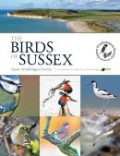
|
|
The Natural History of the South Downs National ParkRobin Crane and Rendel Williams
Sussex Archaeological Society
2013
"This superbly illustrated book has been written with the object of stimulating people's interest in the wildlife and countryside of the South Downs National Park, not simply by highlighting some special plants and animals, but by giving readers a greater understanding of the evolution of the wild places, the history of nature conservation and the management of habitats and species."
|
Buy from amazon.co.uk 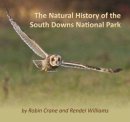
|
|
South Downs WayPaul Millmore
National Trail Guides
Aurum Press
2013
"The South Downs Way runs for 100 miles (160 km) over the chalk downland of Sussex and Hampshire, from Eastbourne to Winchester. It is one of only two National Trails that can be used not only by walkers but also by cyclists and horse-riders for its entire length This is the complete, official guide for the long-distance walker or the weekend stroller. All you need is this one book."
|
Buy from amazon.co.uk 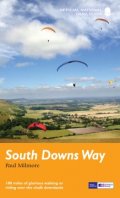
|
|
Features Of The Serpent Trail
Illustrations: Carol Roberts, Mike Langman, Richard Lewington, Chris Shields
Occasional Publication Volume 151
Field Studies Council
2012
"This long-distance footpath in Surrey, West Sussex and Hampshire, the Serpent Trail links the remaining fragments of lowland heath in the western part of the South Downs National Park. This new 12-panel fold-out chart features some of the special animals and plants for which this area is justly famous."
|
Buy from amazon.co.uk 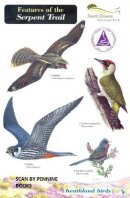
|
|
Walks in the South Downs National ParkKev Reynolds
A Cicerone Guide
Cicerone Press
2011
"A walking guide to the South Downs National Park, across Hampshire and East Sussex in southern England, England's newest national park, describing 40 routes for all abilities, from Winchester to Eastbourne. With some of the most iconic landscapes in southern England, including the white chalk cliffs of Beachy Head and the Seven Sisters, and such well-loved landmarks as Ditchling Beacon and atmospheric ancient monuments like the Cissbury Ring, walking in the park proves a delightful experience mile after mile. This guide contains carefully researched and accessible walks that cater as much for the casual stroller as for the long-distance walker. Romantic villages and prehistoric sites provide plenty to fire the imagination and captivate the interest and the area is easily reached from London and the south coast."
|
Buy from amazon.co.uk 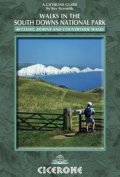
|
|
Features Of The South Downs Way
Illustrations: Mike Langman, Carol Roberts, Richard Lewington
Occasional Publication Volume 146
Field Studies Council
2011
"The South Downs National Park was designated in March 2010. This fold-out chart is aimed at walkers and visitors to this area. It features artwork to help identify the common birds, livestock, moths and butterflies and farm crops. Included are a map of the South Downs Way National Trail and a height profile of the walk."
|
Buy from amazon.co.uk 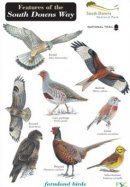
|
|
Birdwatching at Pulborough Brooks Through the SeasonsDavid Golds
A Sussex Guide
SB Publications
2010
A Guide to the West Sussex RSPB Nature Reserve.
|
Buy from amazon.co.uk 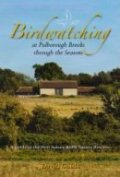
|
|
Where to Watch Birds: Kent, Surrey & SussexDon Taylor, Jeffrey Wheatley and Paul James
Christopher Helm
2009
"The south-eastern corner of England is a densely populated region but one which holds many rich bird habitats. For example, on the south coast of East Sussex and Kent there are undisturbed shingle beaches supporting nationally important tern colonies, and inland there are Surrey heaths, important for many nationally scarce species like Dartford Warbler and Woodlark. In north Kent there is a network of important sites along the Swale estuary which are of great importance for passage and wintering waders and wildfowl. These counties also often attract large numbers of passage migrants, including vagrant rarities from the continent. This guide explores the best birding sites in Kent, Surrey and Sussex. Several new sites have been added to this revised and updated fifth edition. Each site is described in terms of 'Habitat', 'Species', 'Access' and 'Birds', and the volume is illustrated throughout with line drawings and maps of each site. The manual seeks to enable birders to plan productive trips at any time of the year."
|
Buy from amazon.co.uk 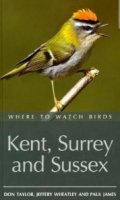
|
|
Bird Watching in SussexRob Yarham
A Sussex Guide
Snake River Press
2009
"Did you know you that nightingales regularly sing in a Billinghurst rubbish tip? Or that peregrine falcons make themselves at home on top of Chichester Cathedral? Even if you can't tell a hobby from a handsaw, the sight of a soaring bird over the Sussex Downs always lifts the heart. That's what seasoned birdwatcher Rob Yarham believes, and to help the rest of us to get more out of these life affirming moments, he has chosen his top 20 Sussex birds and written an affectionate personal tribute to each of them. His descriptions of the birds and his encounters with them will inspire you to go out looking with new eyes. The second-half of the book is devoted to a review of the best sites and places to find Rob's top 20, and many other fascinating birds: Sussex natives, incomers and birds of passage. With a foreword by popular TV wildlife presenter Chris Packham, this is an ideal introduction for newcomers to bird-watching in Sussex."
|
Buy from amazon.co.uk 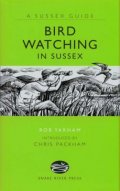
|
|
The Sussex Year: A Country CalendarDavid Lang
Pomegranate Press
2009
"Sussex is rich in wildlife, and few naturalists have as broad a knowledge of its birds, beasts and flowers as David Lang. The author of acclaimed books on wild orchids and hedgerow berries, and a popular lecturer on travel and natural history, he here leads us on a month-by-month safari into the countryside he loves."
|
Buy from amazon.co.uk 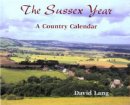
|
|
Sussex WildlifeDavid Mortimer
A Sussex Guide
Snake River Press
2008
"Luckily for us we live in a county blessed with a naturally variable landscape: we have chalk cliffs, rolling grasslands, small fields, open heath land, forests, wetlands, rivers, ghylls and the sea. This almost infinite variety gives rise to an embarrassing richness of wildlife - everything from bats at Ebernoe to bitterns at Rye, gnarled ancient yews at Kingley Vale to dyer's greenweed at Bedelands, beewolves in Hastings to tiger beetles in Stedham. So, where to look first? Let "Sussex Wildlife" lead you to the best spots to discover rare plants, observe endangered species of insects and animals and enjoy unique and special habitats."
|
Buy from amazon.co.uk 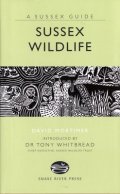
|
|
Birdwatching at the Seaside: Living with Peregrines and Other Birds in a Sussex Coastal CityBrian Easlea
Pen Press
2008
"Have you ever wondered why people watch birds? This book intends to entice you to join the many hundreds and thousands of British people who regularly enjoy this absorbing pastime."
|
Buy from amazon.co.uk 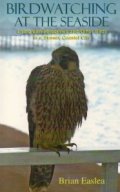
|
|
Walking in Sussex: Long Distance and Day WalksKev Reynolds
A Cicerone Guide
Cicerone Press
2004
"This new edition of this popular guide leads you along the variety of long-distance paths that criss-cross the county and offers a host of shorter day walks. It contains details of 40 day walks and 11 long-distance paths through Sussex. It includes routes that delve into a rural heartland, that follow streams and rivers, that trace the bank of hammer pond and lake, and those that follow the glistening sea on one side, flanked by sheep-grazed downland on the other. It is illustrated with OS mapping the author's own full-colour photographs. This is a fully-updated edition of this popular guide by an experienced and interesting author."
|
Buy from amazon.co.uk 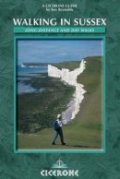
|
|
Best Birdwatching Sites: SussexAdrian Thomas and Peter Francis
Buckingham Press
2003
"From Scotney Court in the east to Chichester Harbour in the west, the two counties of Sussex abound in great birding sites and authors Adrian Thomas of the RSPB and Peter Francis have detailed 57 of the best for this book, making it the most comprehensive birding guide for Sussex on the market. The wellknown sites such as RSPB Pulborough Brooks, WWT Arundel, Pagham and Rye Harbour naturally receive detailed coverage, but the authors have followed the less-travelled roads as well to highlight the promise of sites such as Chapel Common with its Dartford Warblers, Wood Larks and Nightjars or Combe Haven near Hastings where Bearded Tits lurk in the massive reedbed and Water Pipits are regular winter visitors. Though East and West Sussex don't attract the rarities of the east coast or south-western counties, it is well located to experience wader and wildfowl passage on a large scale or to watch out for incoming spring migrants. As part of their Birding Year in Sussex article, the authors provide migrant arrival dates for March and April and supplement this with a detailed guide to spring seawatching that includes the top sites and a chart showing when key species reach their peak numbers between February and May."
|
Buy from amazon.co.uk 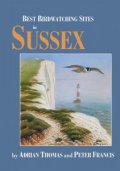
|
|
The Birds of Sussex, A ChecklistSussex Ornithological Society
2003
"The Checklist lists all the species that the Society accepts are on the Sussex Birdlist, and shows the conservation status and abundance (or rarity) of each species by season."
|
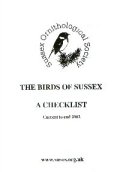 |
|
Where to Watch Birds: Kent, Surrey & SussexDon Taylor, Jeffrey Wheatley & Paul James
Christopher Helm
2003
"The southeastern corner of England is a densely populated region but one which holds many rich bird habitats. For example, on the south coast of East Sussex and Kent there are undisturbed shingle beaches supporting nationally important tern colonies, and inland there are Surrey heaths, important for many nationally scarce species like Dartford Warbler and Woodlark. In north Kent there is a network of important sites along the Swale estuary which are of great importance for passage and wintering waders and wildfowl. These counties also often attract large numbers of passage migrants, including vagrant rarities from the continent. This manual explores the best birding sites in Kent, Surrey and Sussex. Several new sites have been added to this revised and updated fourth edition. Each site is described in terms of habitat, species, access and timing, and the volume is illustrated throughout with line drawings and maps of each site. The manual seeks to enable birders to plan productive trips at any time of the year."
|
Buy from amazon.co.uk 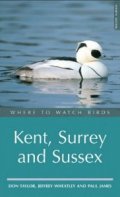
|
|
Unto the Hills: The History and Wildlife of the South DownsPatrick Coulcher
Book Guild Ltd
2001
|
Buy from amazon.co.uk 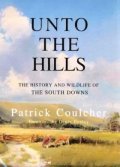
|
|
Pesticide Use, Avian Food Resources and Bird Densities in SussexJulie E. Ewald and Nicholas J. Aebischer
Joint Nature Conservation Committee
1999
|
Buy from amazon.co.uk 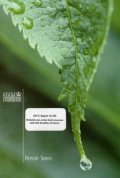
|
|
Where to Watch Birds: Kent, Surrey & SussexDon Taylor, Jeffrey Wheatley, Dave Burgess & Paul James
Christopher Helm
1997
"In spite of pressure from urban development and industrial expansion, Kent, Surrey and Sussex remain three of the best counties in southern England for birdwatching. Every site account has been revised and updated for this edition and new sites have been added. There is also an additional section on the status and distribution of every species recorded in the three counties since 1900."
|
Buy from amazon.co.uk 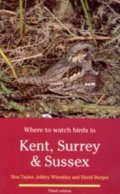
|
|
The Birds of SussexEditor: Paul James
Illustrations: John Reaney
Sussex Ornithological Society
1996
"In July 1996, the Sussex Ornithological Society published the long awaited Birds of Sussex. The contents of this 591-page book comprise: comprehensive species accounts written by a team of expert authors; coloured distribution maps; histograms and analysis tables, particularly of scarcer species; wildfowl and wader counts; first and last dates for summer and winter visitors; a review of the history of ornithology in Sussex; habitat chapters; a gazetteer; full page colour illustrations by bird artist John Reaney; colour photographs by leading wildlife photographers and over 60 black and white vignettes."
|
Buy from amazon.co.uk 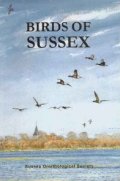
|
|
Downland Wildlife: A Naturalist's Year in the North and South DownsJohn F. Burton and John Davis
George Philip
1992
"A season-by-season guide to the wildlife of the North and South Downs of England, complete with details of conservation areas and an illustrated gazetteer of sites of particular interest and nature reserves."
|
Buy from amazon.co.uk 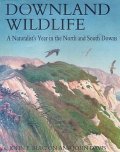
|
|
Where to Watch Birds: Kent, Surrey & SussexDon Taylor, Jeffrey Wheatley, Tony Prater
Christopher Helm
1991
"Containing maps and practical information, this is a guide for birdwatchers to the most desirable sites in Kent, Surrey and Sussex, at any time of the year."
|
Buy from amazon.co.uk 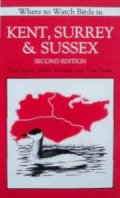
|
|
Where to Watch Birds: Kent, Surrey & SussexDon Taylor, Jeffrey Wheatley, Tony Prater & Paul James
Christopher Helm
1987
|
Buy from amazon.co.uk 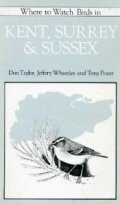
|
|
Birds of the Ashdown ForestAlan Barnes
1986
|
Buy from amazon.co.uk 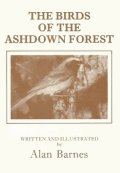
|
|
The Birds of Sussex: Their Present StatusMichael Shrubb
Phillimore & Co Ltd
1979
"The first part discusses the main habitats in the county and the species found in them, covering woodland, heathland, the coast, fresh water habitats, farmland and urban areas. There is a more detailed account of woodland bird populations, and both maps and photographs are used to illustrate recent changes in the habitats described. The second part of the book consists principally of a systematic list of species, giving the current (1979) status of each, to provide an invaluable checklist of all the species at present accepted by the Sussex Ornithological Society. This is followed by a detailed discussion of status in the breeding season, during the winter, and on migration."
|
Buy from amazon.co.uk 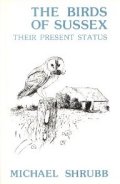
|
|
The Naturalist In South-east England: Kent, Surrey and SussexS.A. Manning
David & Charles
1974
200 pages with b/w photographs and maps.
|
Buy from amazon.co.uk 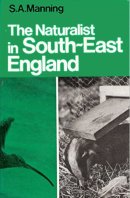
|
|
The Birds and Mammals of Pagham HarbourW.W.A. Phillips
Bognor Regis Nat. Sci. Soc.
1965
A 3 volume work that includes 57 colour plates..
|
Buy from amazon.co.uk 
|
|
A Guide to the Birds of SussexG. des Forges and D.D. Harber
Oliver & Boyd
1963
"Summarises the status and distribution of all birds which the authors admit to the Sussex list. A short chapter outlines the topography of Sussex and is supplemented by a fold-map."
|
Buy from amazon.co.uk 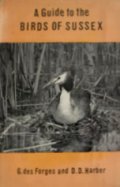
|
|
The WealdS.W. Wooldridge & Frederick Goldring
Collins
The New Naturalist 26
1953
"A country of rolling downs, quiet woods and green fields, the Weald occupies the greater part of the counties of Kent, Surrey, and Sussex, with a fringe of Hampshire. It has a marked community of its own, yet within the rim of chalk downs that forms its natural boundary is a remarkable diversity of sandy heathlands to rich loams, from waterless chalklands to tidal marshes. Professor Wooldrige put the results of a lifetime's research and exploration into this New Naturalists volume. It remains an unrivalled introduction to the understanding and enjoyment of this lovely region and of its natural history in the widest sense."
|
Buy from amazon.co.uk 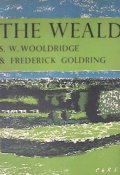
|
|
A History of Sussex BirdsJohn Walpole-Bond
Colour plates: Philip Rickman
H.F. & G. Witherby
1938
A 3 volume work that includes 57 colour plates.
|
Buy from amazon.co.uk 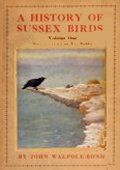
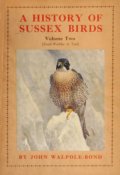
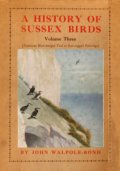
|
|
The Birds of EastbourneE.C. Arnold
Baskerville Press
1936
Includes 10 colour plates and 9 b/w plates.
|
Buy from amazon.co.uk 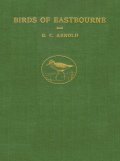
|
|
Nature in DownlandW. H. Hudson
Longmans, Green, And Co.
1900
Opening lines: "On one of the hottest days in August of this exceptionally hot year of 1899, I spent a good many hours on the top of Kingston Hill, near Lewes. There are clear mornings, especially in the autumn months, when magnificent views of the surrounding country can be had from the flat top of that very long hill. Usually on hot summer days the prospect, with the sea of downland and the grey glinting ocean beyond on one side, the immense expanse of the wooded Sussex weald on the other, is covered with a blue obscuring haze, and this hot, windy August day was no exception. The wind, moreover, was so violent that all winged life, whether of bird or insect, had been driven into hiding and such scanty shade as existed ; it was a labour even to walk against the wind. In spite of these drawbacks, and of the everywhere brown parched aspect of nature, I had here some hours of rare pleasure, felt all the more because it had not been looked for. Kingston Hill is not one of the dome-shaped downs, where when not on the very summit you are on a slope : the top forms a level plateau or table-land of considerable extent, covered with a thick turf and occasional patches of furze, with some bramble and elder bushes. After aimlessly wandering about over this high plain for some time I went to a spot where the hill sloped away toward the valley of the Ouse. Beyond the vast sweep of parched ground beneath me, green meadows and trees were visible, with scattered village and farm houses, and the two small churches of Iford and Kingston vaguely seen in the haze."
|
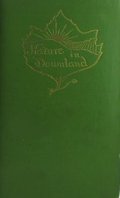
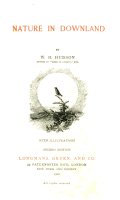
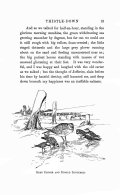 |
|
The Birds of SussexWilliam Borrer
6 colour plates: J.G. Keulemans
R.H. Porter
1891
With 6 colour plates and a folding, coloured map.
From the preface: "It is now nearly a hundred years since Markwick, the friend and correspondent of Gilbert White, read before the Linnean Society, on May 5th, 1795, his Catalogue of Birds found in the county of Sussex,' numbering 168 species, including those which are domesticated. About the year 1800, Mr. Woolgar, of Lewes, made a list of birds observed by him in that neighbourhood, which may be found in Horsfield's 'History of Lewes.' In 1849, Mr. Knox published the first edition, and in 1855 the third, of his 'Ornithological Rambles in Sussex,' quoted in this work as "O. R." Since that time, as far as I am aware, no attempt has been made to give a comprehensive account of its avifauna; there are, however several local Societies, as those of Brighton, Chichester, Eastbourne, Hastings, and Lewes, which, from time to time, publish their 'Transactions,' and doubtless do good work in their respective districts. There is also a Museum at Chichester, and one at Brighton, as well as the splendidly mounted collection of the late Mr. Booth, recently made over to that town. There have been, and there still are, many accurate observers who contribute accounts of interesting occurrences in the county to the pages of 'The Zoologist,' especially Mr. Dutton, Mr. Jeffery, Mr. Monk, and Mr. Wilson, who for many years have been its correspondents."
|
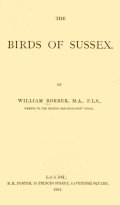
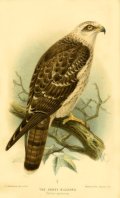
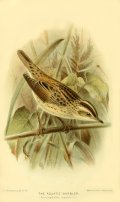 |
|
Ornithological Rambles in Sussex: with A Systematic Catalogue of the Birds of That County and remarks on their local distributionA.E.Knox
John Van Voorst
1849
From the preface: "The following letters were originally addressed to a friend, residing beyond the Tweed, and owe their appearance in a collected form to a subsequent suggestion that they might become a popular contribution to the Fauna of Sussex, possessing some attractions for the sportsman as well as the ornithologist. The author cannot, however, conceal from himself, that having on the present occasion limited the sphere of his observations to a single county, it would be vain and presumptuous of him to expect that they should prove as interesting to the general reader as to those who, from local circumstances, might be supposed to feel somewhat of an enduring interest in such records, or as to an old and intimate friend, in whom "auld lang syne" and congeniality of tastes had ensured a ready listener. But to take a wider view of the subject. It will be admitted that the geographical position of Sussex, as a southern maritime county, with its long line of sea-coast, is favourable for observations on the migratory birds, while the remarkable variety of soil and scenery contained within its limits appears to have a considerable influence on the local distribution of many species ; but without indulging in speculative theories, or attempting to follow up the various links in the chain, geological, botanical, and entomological, the author still ventures to hope that he has been able to throw some little light on these matters ; that a few sparks may be struck from the following pages, which hereafter in abler hands may be fanned into a flame, and more fully elucidate this mysterious and interesting subject."
|
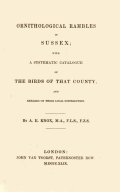 |
|